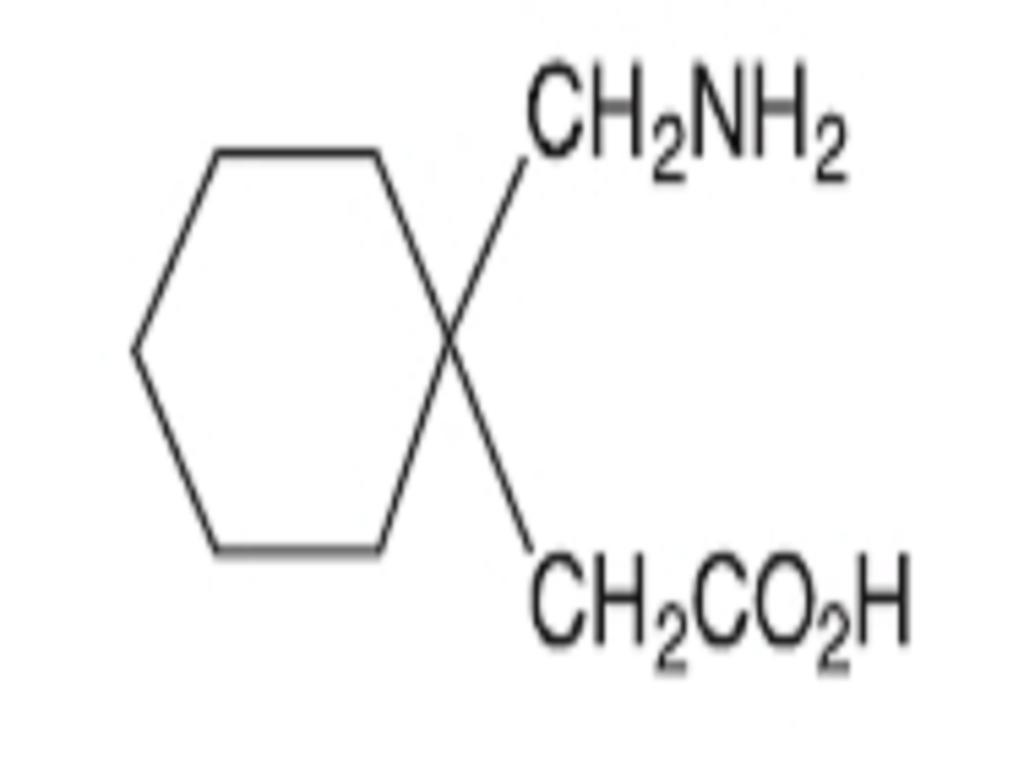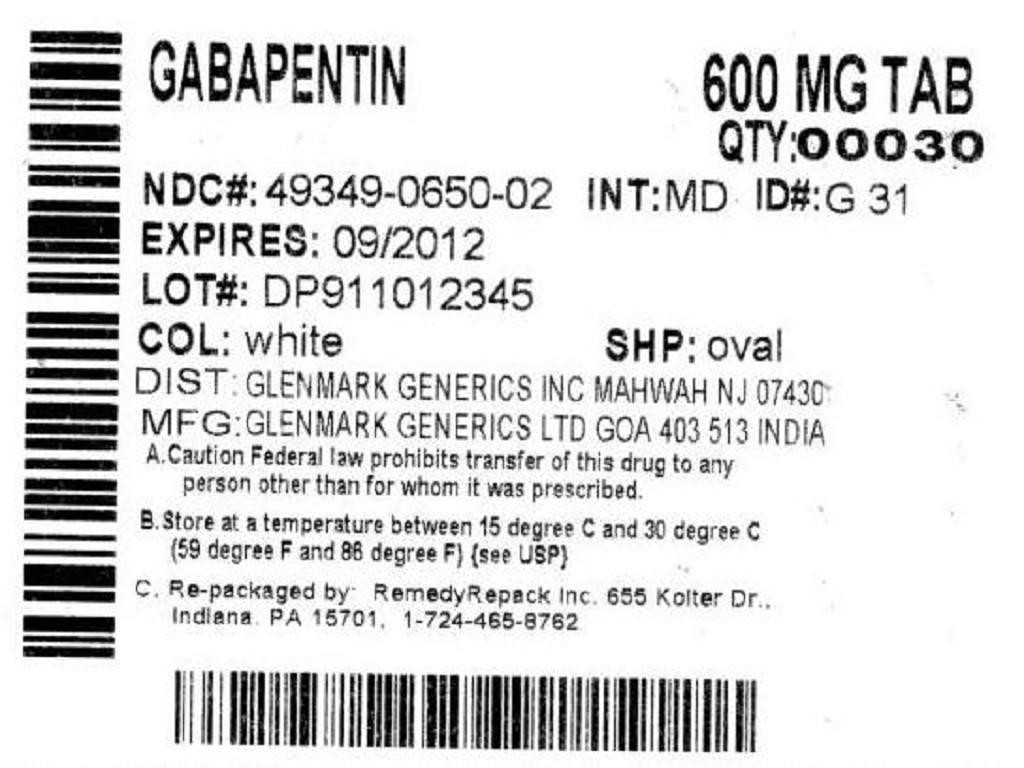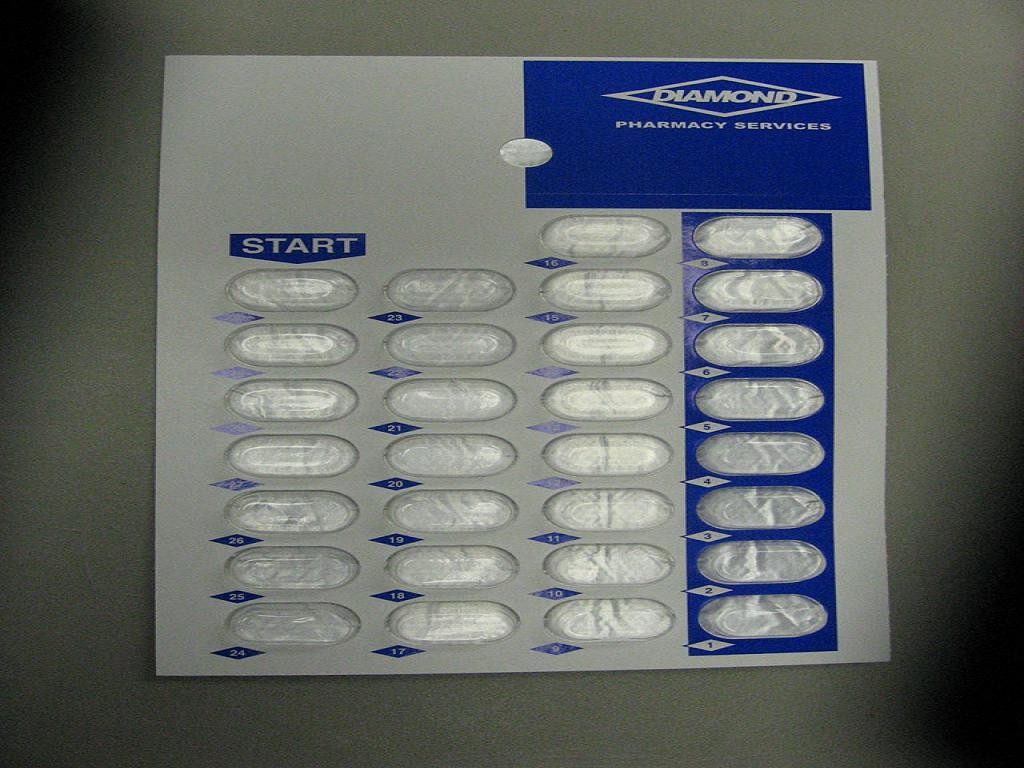Gabapentin
FULL PRESCRIBING INFORMATION: CONTENTS*
- GABAPENTIN DESCRIPTION
- CLINICAL PHARMACOLOGY
- PHARMACOKINETICS AND DRUG METABOLISM
- CLINICAL STUDIES
- INDICATIONS & USAGE
- GABAPENTIN CONTRAINDICATIONS
- WARNINGS
- PRECAUTIONS
- INFORMATION FOR PATIENTS
- LABORATORY TESTS
- DRUG INTERACTIONS
- DRUG & OR LABORATORY TEST INTERACTIONS
- CARCINOGENESIS & MUTAGENESIS & IMPAIRMENT OF FERTILITY
- PREGNANCY
- NURSING MOTHERS
- PEDIATRIC USE
- GERIATRIC USE
- GABAPENTIN ADVERSE REACTIONS
- DRUG ABUSE AND DEPENDENCE
- OVERDOSAGE
- DOSAGE & ADMINISTRATION
- HOW SUPPLIED
- STORAGE AND HANDLING
- SPL MEDGUIDE
- PACKAGE LABEL.PRINCIPAL DISPLAY PANEL SECTION
FULL PRESCRIBING INFORMATION
GABAPENTIN DESCRIPTION

CLINICAL PHARMACOLOGY
Mechanism of ActionPHARMACOKINETICS AND DRUG METABOLISM
Oral Bioavailability:
Distribution:
Elimination:
Special Populations: Patients With Renal Insufficiency
DOSAGE AND ADMINISTRATION, TABLE 6
Special Populations:
Adult Patients With Renal Insufficiency:
DOSAGE AND ADMINISTRATION
Hemodialysis:
Dosage adjustment in patients undergoing hemodialysis is necessary (seeDOSAGE AND ADMINISTRATION).
Hepatic Disease:
Because gabapentin is not metabolized, no study was performed in patients with hepatic impairment.
Age:
PRECAUTIONS: Geriatric use, andDOSAGE AND ADMINISTRATION.)
Pediatric:
Gabapentin pharmacokinetics were determined in 48 pediatric subjects between the ages of 1 month and 12 years following a dose of approximately 10 mg/kg. Peak plasma concentrations were similar across the entire age group and occurred 2 to 3 hours postdose. In general, pediatric subjects between 1 month and <5 years of age achieved approximately 30% lower exposure (AUC) than that observed in those 5 years of age and older. Accordingly, oral clearance normalized per body weight was higher in the younger children. Apparent oral clearance of gabapentin was directly proportional to creatinine clearance. Gabapentin elimination half-life averaged 4.7 hours and was similar across the age groups studied.
A population pharmacokinetic analysis was performed in 253 pediatric subjects between 1 month and 13 years of age. Patients received 10 to 65 mg/kg/day given TID. Apparent oral clearance (CL/F) was directly proportional to creatinine clearance and this relationship was similar following a single dose and at steady state. Higher oral clearance values were observed in children <5 years of age compared to those observed in children 5 years of age and older, when normalized per body weight. The clearance was highly variable in infants <1 year of age. The normalized CL/F values observed in pediatric patients 5 years of age and older were consistent with values observed in adults after a single dose. The oral volume of distribution normalized per body weight was constant across the age range.
These pharmacokinetic data indicate that the effective daily dose in pediatric patients with epilepsy ages 3 and 4 years should be 40 mg/kg/day to achieve average plasma concentrations similar to those achieved in patients 5 years of age and older receiving gabapentin at 30 mg/kg/day (seeDOSAGE AND ADMINISTRATION).
Gender:
Although no formal study has been conducted to compare the pharmacokinetics of gabapentin in men and women, it appears that the pharmacokinetic parameters for males and females are similar and there are no significant gender differences.
Race:
Pharmacokinetic differences due to race have not been studied. Because gabapentin is primarily renally excreted and there are no important racial differences in creatinine clearance, pharmacokinetic differences due to race are not expected.
CLINICAL STUDIES
Postherpetic Neuralgia
TABLE 1
**
12


Figure 3

Epilepsy
Figure 4

INDICATIONS & USAGE
Postherpetic NeuralgiaEpilepsy
GABAPENTIN CONTRAINDICATIONS
WARNINGS
Suicidal Behavior and IdeationNeuropsychiatric Adverse Events-Pediatric Patients 3-12 years of age
Withdrawal Precipitated Seizure, Status Epilepticus
Tumorigenic Potential
PRECAUTIONS: Carcinogenesis, Mutagenesis, Impairment of Fertility
Sudden and Unexplained Death in Patients With Epilepsy
PRECAUTIONS
INFORMATION FOR PATIENTS
Drug Interactions
PRECAUTIONS: Pregnancy
LABORATORY TESTS
DRUG INTERACTIONS
Phenytoin:
Carbamazepine:
Valproic Acid:
Phenobarbital:
Naproxen:
Hydrocodone:
Morphine:
PRECAUTIONS
Cimetidine:
Oral Contraceptive:
Antacid (Maalox
Effect of Probenecid:
DRUG & OR LABORATORY TEST INTERACTIONS
CARCINOGENESIS & MUTAGENESIS & IMPAIRMENT OF FERTILITY
PREGNANCY
NURSING MOTHERS
PEDIATRIC USE
CLINICAL PHARMACOLOGY: Clinical Studies
GERIATRIC USE
CLINICAL PHARMACOLOGYADVERSE REACTIONSDOSAGE AND ADMINISTRATION
GABAPENTIN ADVERSE REACTIONS
Postherpetic Neuralgia
Incidence in Controlled Clinical Trials
TABLE 3
**
Epilepsy
WARNINGS, Neuropsychiatric Adverse Events
Incidence in Controlled Clinical Trials
TABLE 4
***
TABLE 5
***
Other Adverse Events Observed During All Clinical Trials
Clinical Trials in Adults and Adolescents (Except Clinical Trials in Neuropathic Pain)
Body As A Whole:
Cardiovascular System:
Digestive System:
salivary gland enlarged, lip hemorrhage, esophagitis, hiatal hernia, hematemesis, proctitis, irritable bowel syndrome, rectal hemorrhage, esophageal spasm.
Endocrine System:
Rare: hyperthyroid, hypothyroid, goiter, hypoestrogen, ovarian failure, epididymitis, swollen testicle, cushingoid appearance.
Hematologic and Lymphatic System:
's lymphoma, bleeding time increased.
Musculoskeletal System:
Nervous System:
Respiratory System:
Dermatological:
Urogenital System:
Special Senses:
Clinical trials in Pediatric Patients With Epilepsy
Adverse events occurring during epilepsy clinical trials in 449 pediatric patients 3 to 12 years of age treated with gabapentin that were not reported in adjunctive trials in adults are:
Body as a Whole:
dehydration, infectious mononucleosis
Digestive System:
hepatitis
Hemic and Lymphatic System:
coagulation defect
Nervous System:
aura disappeared, occipital neuralgia
Psychobiologic Function:
sleepwalking
Respiratory System:
pseudocroup, hoarseness
Clinical Trials in Adults With Neuropathic Pain of Various Etiologies
Safety information was obtained in 1173 patients during double-blind and open-label clinical trials including neuropathic pain conditions for which efficacy has not been demonstrated. Adverse events reported by investigators were grouped into standardized categories using modified COSTART IV terminology. Listed below are all reported events except those already listed in Table 3 and those not reasonably associated with the use of the drug.
Events are further classified within body system categories and enumerated in order of decreasing frequency using the following definitions: frequent adverse events are defined as those occurring in at least 1/100 patients; infrequent adverse events are those occurring in 1/100 to 1/1000 patients; rare events are those occurring in fewer than 1/1000 patients.
Body as a Whole:
Cardiovascular System:
Digestive System:
Endocrine System:
Infrequent: diabetes mellitus.
Hemic and Lymphatic System:
Metabolic and Nutritional:
Musculoskeletal:
Nervous System:
Respiratory System:
Skin and Appendages:
Special Senses:
Urogenital System:
Postmarketing and Other Experience
In addition to the adverse experiences reported during clinical testing of gabapentin, the following adverse experiences have been reported in patients receiving marketed gabapentin. These adverse experiences have not been listed above and data are insufficient to support an estimate of their incidence or to establish causation. The listing is alphabetized: angioedema, blood glucose fluctuation, breast enlargement, erythema multiforme, elevated liver function tests, fever, hyponatremia, jaundice, movement disorder, Stevens-Johnson syndrome.
Adverse events following the abrupt discontinuation of gabapentin have also been reported. The most frequently reported events were anxiety, insomnia, nausea, pain and sweating.
DRUG ABUSE AND DEPENDENCE
OVERDOSAGE
DOSAGE & ADMINISTRATION
Postherpetic Neuralgia
Epilepsy
Patients >12 years of age:
Pediatric Patients Age 312 years:
CLINICAL PHARMACOLOGY, Pediatrics
Dosage in Renal Impairment

Dosage in Elderly
HOW SUPPLIED
STORAGE AND HANDLING
SPL MEDGUIDE
Gabapentin (gaba pentin) Tablets USP
What is the most important information I should know about gabapentin?
-
● thoughts about suicide or dying
-
● attempts to commit suicide
-
● new or worse depression
-
● new or worse anxiety
-
● feeling agitated or restless
-
● panic attacks
-
● trouble sleeping (insomnia)
-
● new or worse irritability
-
● acting aggressive, being angry, or violent
-
● acting on dangerous impulses
-
● an extreme increase in activity and talking (mania)
-
● other unusual changes in behavior or mood
How can I watch for early symptoms of suicidal thoughts and actions?
-
● Pay attention to any changes, especially sudden changes, in mood, behaviors, thoughts, or feelings.
-
● Keep all follow-up visits with your healthcare provider as scheduled.
What is gabapentin?
-
● Pain from damaged nerves (postherpetic pain) that follows healing of shingles (a painful rash that comes after a herpes zoster infection) in adults.
-
● Partial seizures when taken together with other medicines in adults and children 3 years of age and older.
Who should not take gabapentin?
What should I tell my healthcare provider before taking gabapentin?
-
● have or have had kidney problems or are on hemodialysis
-
● have or have had depression, mood problems, or suicidal thoughts or behavior
-
● are pregnant or plan to become pregnant. It is not known if gabapentin can harm your unborn baby. Tell your healthcare provider right away if you become pregnant while taking gabapentin. You and your healthcare provider will decide if you should take gabapentin while you are pregnant.
-
● If you become pregnant while taking gabapentin, talk to your healthcare provider about registering with the North American Antiepileptic Drug (NAAED) Pregnancy Registry. The purpose of this registry is to collect information about the safety of antiepileptic drugs during pregnancy. You can enroll in this registry by calling 1-888-233-2334.
-
● are breast-feeding or plan to breast-feed. Gabapentin can pass into breast milk. You and your healthcare provider should decide how you will feed your baby while you take gabapentin.
How should I take gabapentin?
-
● Take gabapentin exactly as prescribed. Your healthcare provider will tell you how much gabapentin to take.
-
● Do not change your dose of gabapentin without talking to your healthcare provider. If you break a tablet in half the unused half of the tablet should be taken at your next scheduled dose. Half tablets not used within several days of breaking should be thrown away.
-
● Gabapentin can be taken with or without food. If you take an antacid containing aluminum and magnesium, such as MaaloxMylantaGelusilGavisconor Di-Gelyou should wait at least 2 hours before taking your next dose of gabapentin.
-
● If you take too much gabapentin, call your healthcare provider or your local Poison Control Center right away.
What should I avoid while taking gabapentin?
-
● Do not drink alcohol or take other medicines that make you sleepy or dizzy while taking gabapentin without first talking with your healthcare provider. Taking gabapentin with alcohol or drugs that cause sleepiness or dizziness may make your sleepiness or dizziness worse.
-
● Do not drive, operate heavy machinery, or do other dangerous activities until you know how gabapentin affects you. Gabapentin can slow your thinking and motor skills.
What are the possible side effects of gabapentin?
-
● SeeWhat is the most important information I should know about gabapentin?
-
● The most common side effects of gabapentin include:
How should I store gabapentin?
-
● Store Gabapentin Tablets USP between 59to 86(15to 30
www.glenmarkgenerics.com <%0A%09%09 >
What are the ingredients in gabapentin?
PACKAGE LABEL.PRINCIPAL DISPLAY PANEL SECTION


GabapentinGabapentin TABLET
| ||||||||||||||||||||||||||||||||||||||||||||||||||||||||||||||||||||||||||||||||||||||
PLEASE, BE CAREFUL!
Be sure to consult your doctor before taking any medication!